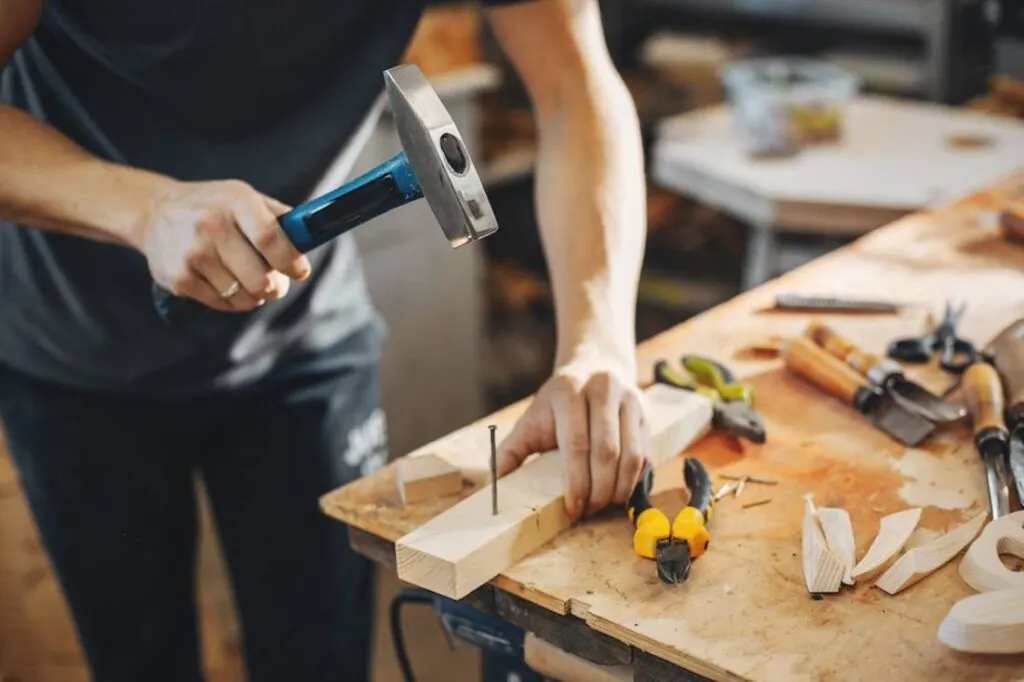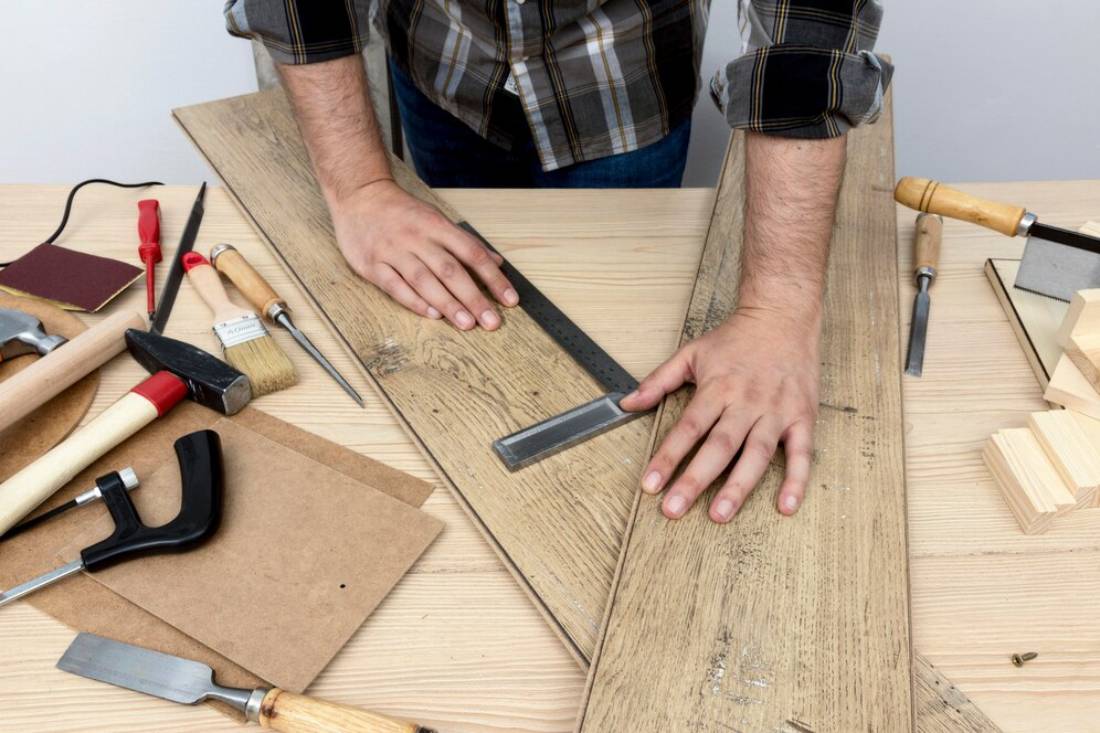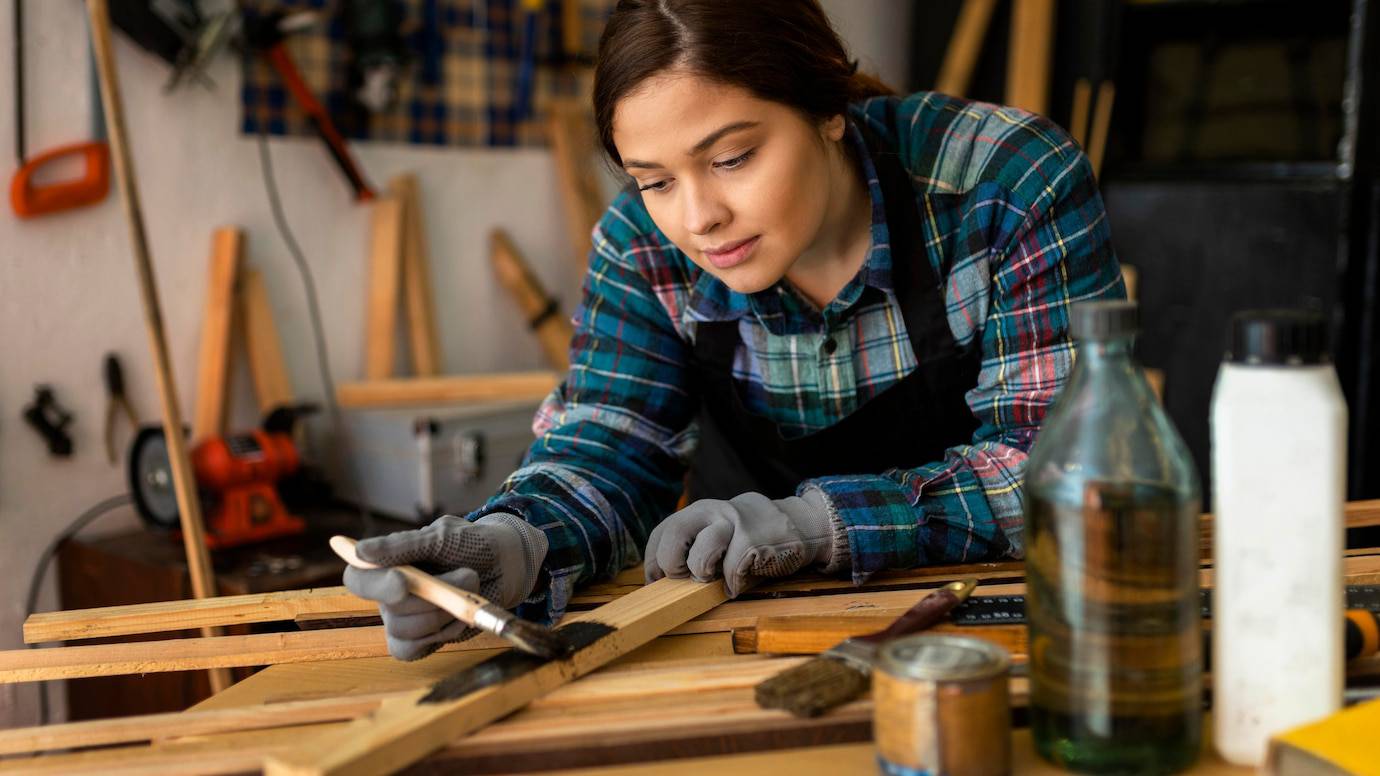
How to Start Woodworking: A Beginner’s Guide
Woodworking is a rewarding and creative hobby that allows you to craft everything from simple shelves to intricate furniture. Whether you’re looking to create handmade wooden crafts, improve your DIY skills, or explore DIY wood projects, getting started with woodworking basics is easier than you might think.
This beginner’s guide will cover essential woodworking tools, basic techniques, and step-by-step projects to help you gain confidence in your skills. Whether you’re working with limited space or have a full workshop, these tips will help you get started on your woodworking journey.
Why Start Woodworking?

Woodworking offers numerous benefits beyond just making beautiful pieces:
- Creativity & Customisation – Build unique, custom-made furniture and decorations.
- Cost Savings – DIY furniture and repairs can be more affordable than buying new.
- Sustainability – Use reclaimed wood to create eco-friendly handmade wooden crafts.
- Skill Development – Improve hand-eye coordination and problem-solving skills.
- Relaxation & Fulfillment – Many woodworkers find the process meditative and rewarding.
Essential Tools for Beginner Woodworkers
Before starting any DIY wood projects, you’ll need some basic tools. Here are the essential ones:
Hand Tools:
- Measuring Tape & Ruler – Precision is key in woodworking.
- Claw Hammer – For driving and removing nails.
- Screwdrivers – Essential for assembling projects.
- Chisels – Useful for carving and shaping wood.
- Hand Saw – For cutting wood without power tools.
- Mallet – Helps with fitting pieces together without damaging them.
Power Tools (Recommended for Beginners):
- Cordless Drill – Ideal for drilling holes and driving screws.
- Jigsaw – Great for cutting curves and detailed shapes.
- Circular Saw – A powerful tool for making straight cuts in large wood pieces.
- Sander – Helps smooth surfaces for a professional finish.
Safety Gear:
- Safety Glasses – Protects your eyes from sawdust and debris.
- Dust Mask – Prevents inhalation of wood particles.
- Work Gloves – Protects hands from splinters and sharp edges.
Understanding Wood Types
Choosing the right wood is crucial for successful DIY wood projects. Here’s a breakdown of common types:
Softwoods (Affordable & Easy to Work With):
- Pine – Lightweight and great for beginner projects.
- Cedar – Naturally weather-resistant, ideal for outdoor projects.
- Fir – Strong and commonly used in structural work.
Hardwoods (Durable & High-Quality):
- Oak – Tough and long-lasting, great for furniture.
- Maple – Smooth finish, excellent for cabinets.
- Walnut – Dark, rich wood used for high-end projects.
If you’re new to woodworking, start with softwoods like pine, as they are easier to cut and shape.
Basic Woodworking Techniques

Mastering woodworking basics will help you build confidence and refine your skills. Here are the fundamental techniques:
1. Measuring & Marking
Accurate measurements ensure well-fitted pieces. Use a measuring tape, ruler, and pencil to mark cuts before sawing.
2. Cutting Wood
- Hand Saw – Best for small, precise cuts.
- Jigsaw – Ideal for curved and intricate cuts.
- Circular Saw – Used for straight and long cuts.
3. Sanding & Smoothing
Sanding removes rough edges and prepares wood for finishing. Start with coarse sandpaper (80-grit) and gradually move to finer grits (220-grit) for a polished look.
4. Drilling & Fastening
- Drill Pilot Holes – Prevents wood from splitting when inserting screws.
- Use Wood Glue – Adds extra strength to joints.
- Nails & Screws – Secure pieces together with nails for aesthetics or screws for a stronger hold.
5. Finishing Techniques
- Wood Stain – Enhances the natural grain and colour.
- Paint – Adds a decorative and protective layer.
- Sealant or Varnish – Protects against moisture and wear.
Beginner-Friendly DIY Wood Projects

Here are some DIY wood projects perfect for beginners:
1. Simple Wooden Shelf
A great starter project that helps you practice measuring, cutting, and fastening.
Steps:
- Cut a wooden board to your desired shelf size.
- Sand the edges for a smooth finish.
- Drill holes and attach brackets or supports.
- Paint or stain for a polished look.
- Mount on the wall securely.
2. Handmade Wooden Coasters
These handmade wooden crafts are simple and make great gifts.
Steps:
- Cut small squares or circles from a wooden board.
- Sand down the rough edges.
- Apply wood stain or paint.
- Seal with a waterproof finish.
3. DIY Wooden Planter Box
Perfect for DIY wood projects in the garden.
Steps:
- Cut four pieces of wood to create a box frame.
- Nail or screw the sides together.
- Drill small holes in the bottom for drainage.
- Paint or seal for weather protection.
4. Basic Wooden Stool
A great introduction to furniture making.
Steps:
- Cut four legs and a square or circular seat.
- Attach legs securely using screws and wood glue.
- Sand for smoothness and apply a finish.
5. Wooden Picture Frame
A simple but rewarding project for showcasing photos or artwork.
Steps:
- Cut four pieces of wood at 45-degree angles.
- Nail or glue them together.
- Sand and apply a decorative finish.
- Insert glass and backing to complete the frame.
Tips for Success in Woodworking
To make your woodworking journey easier, follow these woodworking basics tips:
- Start with Simple Projects – Master basic techniques before moving to complex builds.
- Measure Twice, Cut Once – Ensures accuracy and prevents wasted materials.
- Use Clamps – Holds pieces in place while cutting or glueing.
- Keep a Clean Workspace – Reduces hazards and makes crafting more efficient.
- Watch Online Tutorials – Gain insights from experienced woodworkers.
- Invest in Quality Tools – Good tools last longer and improve project outcomes.
Expanding Your Skills
Once you’re comfortable with DIY wood projects, you can explore advanced techniques like:
- Joinery Methods – Learn dovetail or mortise-and-tenon joints for stronger furniture.
- Carving & Engraving – Create decorative patterns on wood surfaces.
- Wood Burning (Pyrography) – Add artistic designs to wooden crafts.
- Furniture Making – Build tables, chairs, and cabinets with precision.
Woodworking for Beginners: Essential Tools, Techniques & DIY Projects
Woodworking is a rewarding hobby that allows you to create handmade wooden crafts while developing valuable skills. Whether you’re making simple shelves, home decor, or furniture, mastering woodworking basics opens the door to endless creative possibilities.
Start with beginner-friendly DIY wood projects, practice essential techniques, and gradually challenge yourself with more complex builds. With patience and dedication, you’ll soon be crafting beautiful and functional wooden pieces for your home.
Looking for more woodworking inspiration? Subscribe to our newsletter for the latest DIY wood projects and expert tips on mastering woodworking basics!